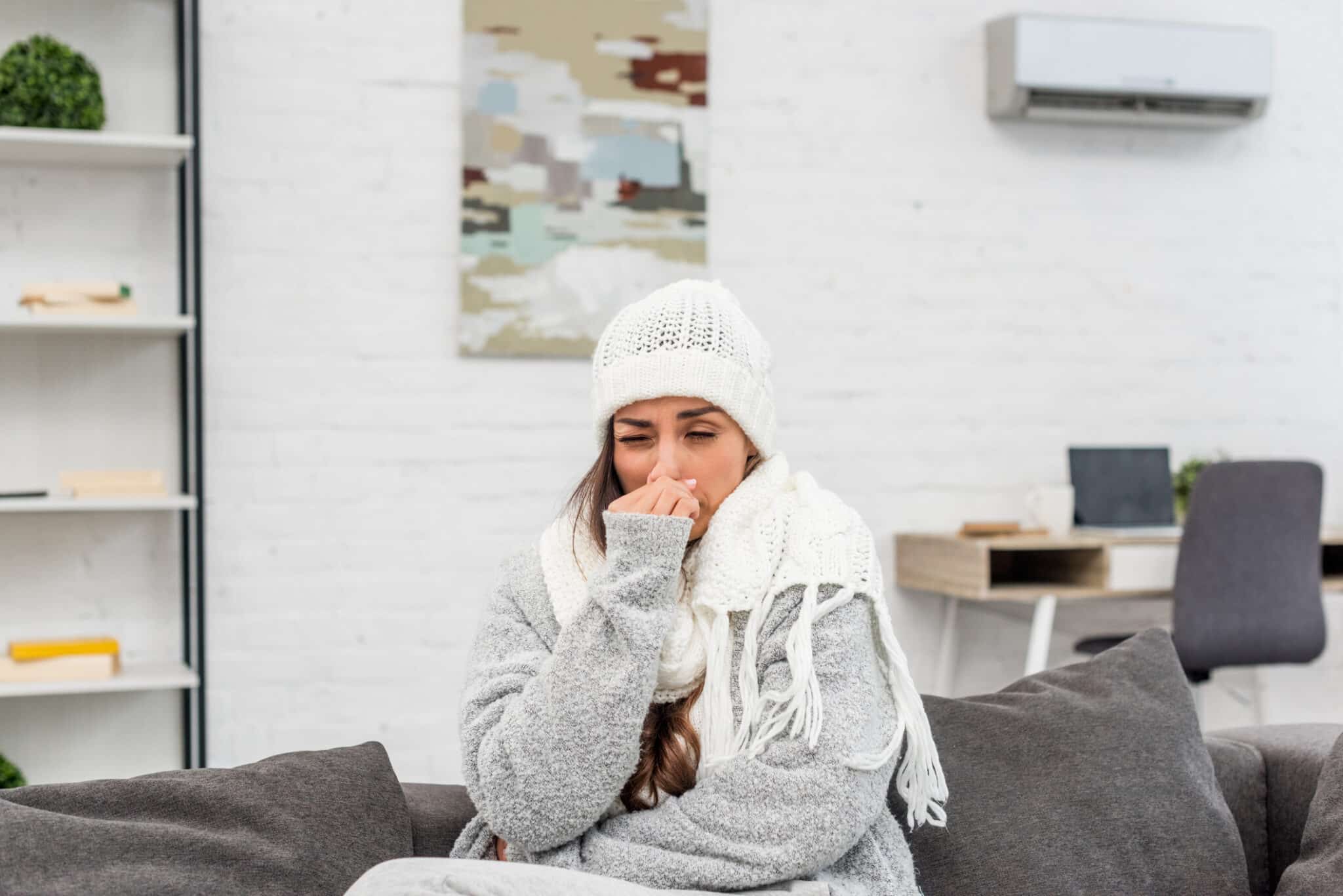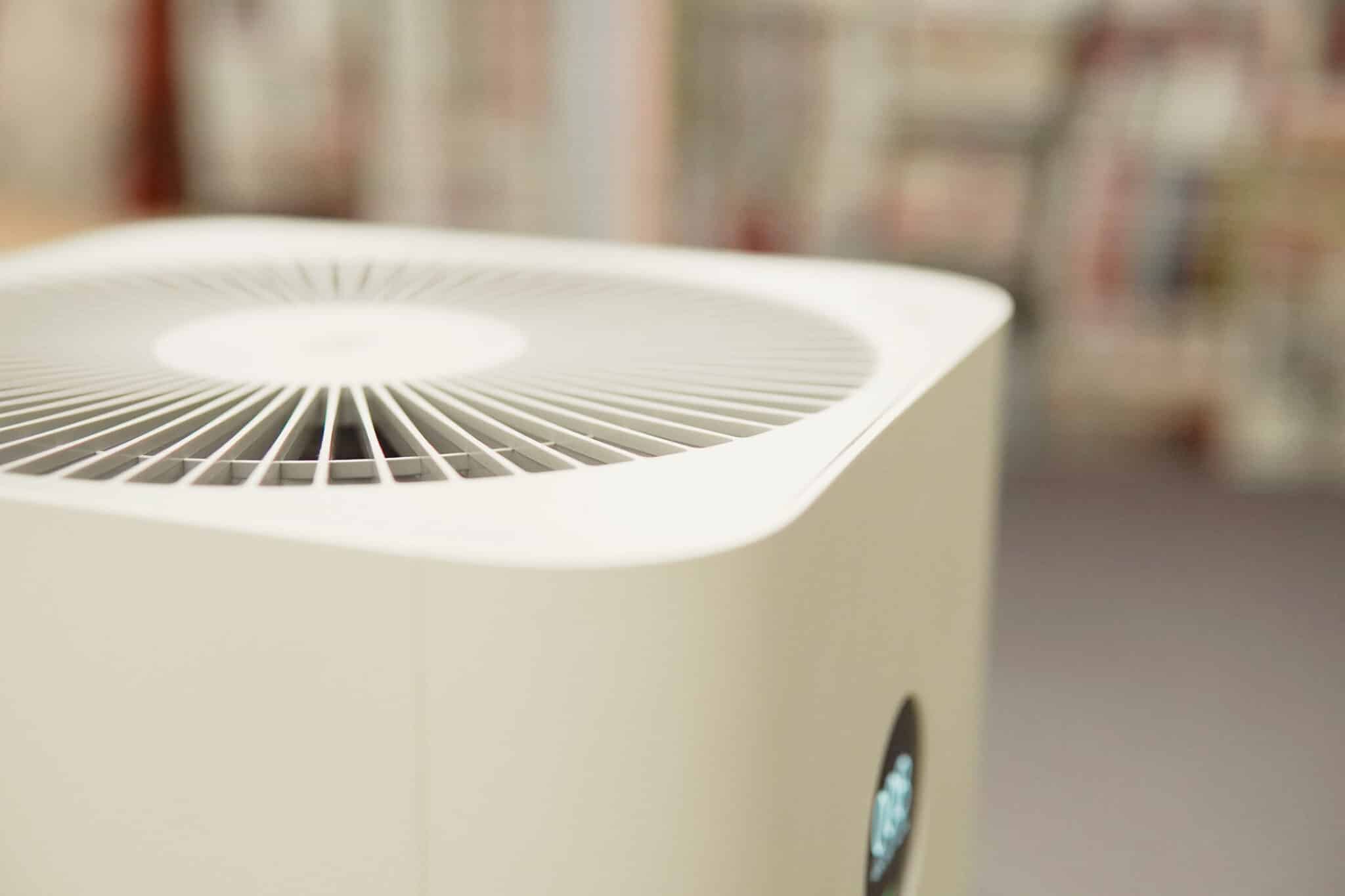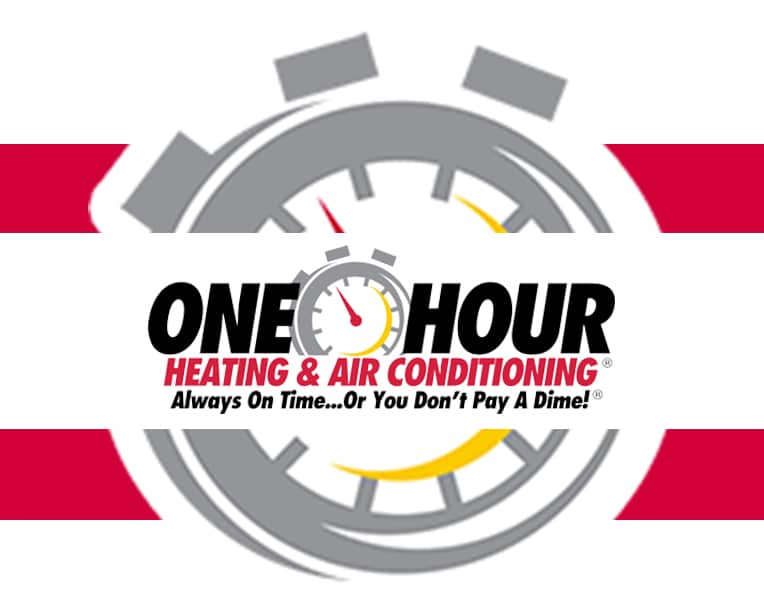Winter brings cozy nights indoors, but it also means increased exposure to indoor air pollutants, making air purifiers a vital addition to your home. Is your air as clean as it should be? As the temperature drops, homes are sealed tight to retain warmth, drastically reducing ventilation.
This creates the perfect environment for indoor air pollutants, allergens, and odors to accumulate. Heating systems, prolonged indoor time, and limited airflow contribute to diminished air quality, often exacerbating respiratory issues and allergies.
The Impact of Winter on Indoor Air Quality
Limited Ventilation
In winter, especially in areas like San Diego, El Cajon, and Lakeside, people tend to close their windows and doors to keep the warmth inside, but this limits the circulation of fresh air. When your home is sealed off, pollutants like dust, pet dander, and cooking fumes accumulate, creating stale and unhealthy air.
Without ventilation, indoor air becomes saturated with these particles, which can irritate your lungs and trigger allergies.
Over time, this lack of fresh air can make your home feel stuffy and uncomfortable, impacting your overall well-being. Limited airflow also means pollutants take longer to dissipate, making clean indoor air a challenge during the colder months.
Increased Use of Heating Systems
Heating systems are a winter essential, but they can also be a source of indoor air quality issues. Forced-air systems, in particular, tend to recirculate dust, allergens, and other particles trapped in your home.
If your heating system hasn’t been cleaned or maintained, it may blow even more pollutants into your living spaces.
Over time, this can worsen respiratory problems like asthma or allergies, as well as cause dry, itchy eyes or irritated sinuses. The increased reliance on heating during the winter months can turn your home into a hotspot for airborne contaminants, making clean air a priority.
Prolonged Indoor Time
With shorter days and colder temperatures, winter means spending more time indoors, which increases your exposure to indoor air pollutants. Activities like cooking, cleaning, and even using candles or fireplaces can release particles and fumes into the air.
For families with pets, dander levels can spike as animals spend more time indoors as well. Extended exposure to pollutants can contribute to fatigue, headaches, or respiratory discomfort over time.
Prolonged indoor time amplifies the effects of poor air quality, making it especially important to address these issues during the winter season.

How Air Purifiers Work
Filtration Technology
Air purifiers use advanced filtration systems to remove airborne pollutants, keeping your indoor air cleaner and healthier. HEPA (High-Efficiency Particulate Air) filters are the gold standard, capturing tiny particles like dust, pollen, and smoke as small as 0.3 microns.
These filters are especially effective for households with allergies or respiratory sensitivities, as they trap the particles that often trigger symptoms.
By continuously pulling in polluted air and pushing out clean air, these filters help maintain a healthier breathing environment. Over time, this can significantly improve air quality and make your home more comfortable during winter.
Activated Carbon Filters
Activated carbon filters are an excellent addition to air purifiers, targeting pollutants that HEPA filters might miss. These filters are designed to trap odors, gases, and volatile organic compounds (VOCs), which are common in households during winter.
Whether it’s the smell of cooking, a smoky fireplace, or chemicals from cleaning products, these filters work to neutralize those lingering scents.
The carbon material absorbs harmful molecules, leaving your air smelling fresher and feeling cleaner. For homes prone to strong odors or chemical sensitivities, carbon filters can make a noticeable difference.
UV-C Light Technology
Some air purifiers come equipped with UV-C light technology, which targets germs and bacteria that standard filters can’t eliminate. These lights destroy the DNA of harmful microorganisms, effectively neutralizing viruses, bacteria, and mold spores in the air.
This technology is particularly beneficial during flu season, helping to reduce airborne pathogens that could spread illness in your household.
By combining UV-C light with filtration, air purifiers provide a multi-layered approach to cleaner air. It’s a powerful way to enhance your home’s air quality, especially when you’re spending more time indoors.
Ionizers
Ionizers work by releasing negatively charged ions into the air, which attach to pollutants like dust, smoke, and allergens. These charged particles then become heavy and fall out of the air, making it easier to clean surfaces and breathe easier.
While ionizers aren’t standalone solutions, they’re great for complementing other air-purifying technologies. Some purifiers combine ionizers with filters for a comprehensive approach to removing pollutants.
This extra layer of protection helps create a cleaner, fresher environment, especially in homes with pets or smokers.
Benefits of Using Air Purifiers in Winter
1. Reduces Allergens
Winter often means more time indoors, which increases exposure to allergens like pet dander, dust mites, and mold spores. Air purifiers with HEPA filters are highly effective at trapping these particles, keeping them from circulating in the air you breathe.
For allergy sufferers, this can significantly reduce symptoms like sneezing, itchy eyes, or congestion, even during the months when allergens are at their peak indoors.
By continuously removing these particles, air purifiers create a healthier living environment, especially in sealed-up winter homes. This makes them a must-have for anyone who wants to breathe easier during the colder months.
2. Minimizes Respiratory Issues
Indoor air can be filled with irritants that aggravate conditions like asthma, bronchitis, or other respiratory issues, especially during winter. Air purifiers help by removing these pollutants, including fine particles from cooking, smoke, or heating systems.
Cleaner air means less strain on your lungs and a reduced chance of triggering respiratory problems. For households with children, seniors, or anyone with compromised lung health, this can make a noticeable difference in day-to-day comfort.
By improving air quality, purifiers offer long-term support for better respiratory health throughout the season.
3. Neutralizes Odors
Winter activities like cooking hearty meals, lighting candles, or using fireplaces can create lingering odors that don’t easily dissipate.
Air purifiers equipped with activated carbon filters are excellent at absorbing these smells, leaving your home feeling fresh and inviting. They also help combat odors from pets or heating systems, which can become more noticeable in closed-up spaces.
Unlike sprays or candles that mask smells, air purifiers eliminate them at the source. The result is a cleaner, more pleasant-smelling home, even when outdoor ventilation is limited.
4. Fights Bacteria and Viruses
With flu and cold season in full swing during winter, air purifiers with UV-C light or advanced filtration systems can help reduce airborne germs. These purifiers neutralize bacteria, viruses, and mold spores, minimizing the chances of illnesses spreading within your home.
While they’re not a substitute for proper hygiene, they add an extra layer of protection by tackling contaminants in the air. This is especially beneficial for households with young kids, seniors, or anyone with a weakened immune system. Cleaner air means fewer germs and a healthier household overall.
5. Improves Sleep Quality
Indoor air quality directly impacts how well you sleep, especially during winter when pollutants like dust and allergens are more concentrated. By removing irritants that can cause nasal congestion or coughing, air purifiers help create a more restful sleep environment.
Cleaner air allows for easier breathing, which can reduce snoring and nighttime disruptions. For those who struggle with allergies or dry air, pairing an air purifier with a humidifier can make sleep even more comfortable.
Waking up refreshed and congestion-free is one of the many underrated benefits of having an air purifier during winter.
Choosing the Right Air Purifier for Winter
Type of Filter
When selecting an air purifier for winter, the type of filter is one of the most important factors to consider. HEPA filters are highly effective for general use, as they capture tiny particles like dust, pet dander, and pollen, which are common indoor allergens.
If odors or chemical fumes are a concern, an air purifier with an activated carbon filter is the better option, as it absorbs smells and harmful volatile organic compounds (VOCs).
Some advanced models combine HEPA and carbon filters, offering a comprehensive solution for cleaner air. Knowing your specific needs will help you pick the right purifier for your home.
Noise Levels
If you plan to use your air purifier in a bedroom, living room, or office, consider the noise level. Quieter models are ideal for spaces where you need peace and relaxation, especially when running the purifier overnight.
Many modern air purifiers are designed with sleep modes or ultra-quiet settings, making them suitable for any room.
For large spaces, you might have to compromise slightly on noise, but choosing a model with variable speed options can give you flexibility. A balance between performance and noise level ensures you’ll use the purifier consistently.
Maintenance Requirements
Air purifiers need regular maintenance to stay effective, so it’s essential to check how often filters need to be replaced. HEPA and carbon filters typically last a few months with regular use, but heavy winter usage may shorten their lifespan.
Some purifiers come with filter replacement indicators, making it easy to know when it’s time for a change.
Additionally, consider the cost of replacement filters when purchasing a purifier, as ongoing maintenance can add up. Easy-to-clean pre-filters can also extend the life of the main filters, saving you money in the long run.
Additional Features
Many air purifiers now come with extra features that make them even more convenient and effective. Look for smart models that connect to apps, allowing you to monitor air quality and adjust settings remotely.
Built-in air quality monitors can give real-time feedback, helping you see how effective the purifier is. Energy-efficient models are a great choice for winter, as you’re likely to run the purifier longer. Features like programmable timers and child locks are also worth considering for added convenience and safety in your home.
Placement Tips for Optimal Air Purifier Performance
Centralized Location
To get the most out of your air purifier, place it in a central spot where it can clean the air in the areas you use the most. Living rooms and bedrooms are ideal, as these are spaces where families tend to spend a lot of time during the winter.
Placing the purifier centrally allows it to pull in polluted air from all directions and distribute clean air effectively.
If your home has an open floor plan, try positioning it where air flows naturally, such as near hallways or larger shared spaces. A well-placed air purifier ensures maximum coverage and efficiency.
Away From Obstructions
For optimal airflow, keep your air purifier away from walls, furniture, or other large objects that might block its intake or output vents. Obstructions can reduce the purifier’s ability to pull in polluted air and disrupt clean air distribution.
Leave at least a few feet of space around the unit to ensure it can work as intended. Avoid placing it in corners or tight spaces, as this limits the purifier’s effectiveness.
A clear, unobstructed location helps the purifier maintain consistent air circulation throughout the room.
Near Pollution Sources
If certain areas of your home generate more pollutants, such as the kitchen, pet zones, or near fireplaces, position your air purifier close to those sources. By tackling pollutants directly at their origin, the purifier can reduce the overall particle load in the air.
For example, placing it near a pet’s bed can help manage dander and fur, while positioning it in the kitchen can combat cooking odors and smoke. Strategically placing your purifier helps it address specific air quality concerns more effectively.
How Air Purifiers Complement Other Winter Indoor Air Quality Strategies
Humidifiers
Pairing an air purifier with a humidifier is a great way to combat the dry air that often comes with winter. While the air purifier removes pollutants like dust and allergens, the humidifier adds moisture to the air, preventing dryness in your skin, throat, and sinuses.
Together, these devices create a balanced indoor environment that is both clean and comfortable. This combination is particularly helpful in areas like San Diego, El Cajon, and Lakeside, where winter heating can make indoor air excessively dry. Using both devices ensures better breathing, less irritation, and an overall healthier space.
Regular Cleaning
Even the best air purifiers work more effectively when paired with regular cleaning routines. Vacuuming carpets, dusting surfaces, and washing bedding help to reduce the buildup of dust, pet hair, and other pollutants that can overload your purifier.
Using a vacuum with a HEPA filter can further minimize airborne particles during cleaning. By reducing the overall amount of contaminants in your home, you make it easier for your air purifier to maintain high-quality air. A clean home combined with an air purifier ensures a healthier indoor environment during winter.
Ventilation Improvements
Although it’s tempting to seal your home completely during the colder months, incorporating some ventilation can work wonders for air quality. Briefly cracking a window or using exhaust fans in the kitchen and bathroom allows stale air to escape and fresh air to enter.
Air purifiers work best in homes where there’s at least a minimal level of air exchange. For instance, running a ceiling fan on a low setting can help circulate the air, allowing the purifier to filter it more effectively. Improved ventilation, along with a purifier, ensures that your indoor air remains fresh and clean.
Breathe Cleaner, Healthier Air This Winter
Don’t let winter’s stale indoor air affect your comfort or health. At One Hour Heating & Air Conditioning San Diego, we’re here to help homes in San Diego, El Cajon, Lakeside, and nearby areas achieve cleaner, fresher air.
From optimizing your heating system to recommending the best indoor air quality solutions, we’ve got you covered. Contact us today and take the first step toward a healthier home this winter!

Frequently Asked Questions (FAQ)
1. Do air purifiers help with winter allergies?
Yes, air purifiers are highly effective at reducing winter allergens like dust mites, pet dander, and mold spores. These allergens often accumulate indoors when windows and doors are closed during colder months.
2. Can air purifiers reduce the risk of catching colds or flu?
While air purifiers can’t guarantee protection, they do reduce airborne germs, bacteria, and viruses that circulate during flu season. Models with UV-C light technology or advanced filtration systems are particularly useful in neutralizing pathogens, helping to lower the chances of illness spreading within your home.
3. Should I run my air purifier all day in winter?
For the best results, it’s recommended to run your air purifier continuously, especially in the rooms you use most frequently. Many purifiers are energy-efficient, so you don’t need to worry about high electricity bills. Continuous use ensures that the air remains clean, even in homes with high levels of activity or allergens.
4. How often should I replace the filters in winter?
Filter replacement frequency depends on your purifier and how often it’s used, but heavy winter usage may require more frequent changes. Typically, HEPA filters need to be replaced every 3–6 months, while carbon filters may last slightly longer. Always check the manufacturer’s guidelines for specific recommendations.
5. Are air purifiers worth it for mild winter climates like San Diego?
Absolutely! Even in mild climates, homes can still accumulate indoor pollutants due to closed windows, heating systems, and prolonged indoor time. Air purifiers ensure clean air year-round, improving comfort and reducing allergens, regardless of how cold it gets outside.



















